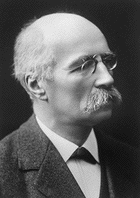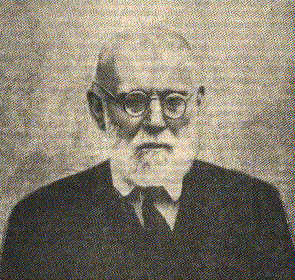


SYSTEMS OF ORGANIZATION FOR 150 |



Henri-Marie LaFontaine Paul Otlet
1854-1943 1868-1944
Two highly ambitious (and possibly clientless?) Belgian lawyers -- Paul Otlet and Henri LaFontaine -- decided to build upon Dewey's scheme in 1895 to develop a subject index for the Institut Internationale du Bibliographic at Brussels. Their goal was to classify all recorded knowledge -- not only books, but patents, periodicals, reports, conference proceedings, and pamphlets -- the entire breadth and scope of printed materials in the world. After Dewey had granted approval, Otlet and LaFontaine set about adopting, translating, and further developing Dewey's 5th edition. Rendered into French, with some changes imposed upon Religion, Social Sciences, and Technology, their completed scheme was originally known as the "Brussels Expansion."
Though based on DDC, UDC differs in several important respects. The counselors retained the basic structure of the ten main classes as well as most of the 1,000 three digit notations, but a staggering quantity of much more minutely divided subdivisions was introduced. Mathematical symbols and punctuation marks replaced Dewey's form and place auxiliaries. Most notably the colon was deployed throughout -- enabling linking of two or more UDC codes, thus making the scheme extraordinarily flexible. The 1st edition was published in 1905 in French; subsequent editions followed in German, Russian, Spanish, Japanese, and other languages.
The quest for a worldwide bibliography was abandoned in the 20's. Nevertheless, UDC lives on and is used throughout the world, as it lends itself well to the scientific and technical fields. Its application includes specialist subject bibliographies in the United States, numerous libraries throughout Europe, and in the United Nations library. In 1963 UDC was made mandatory for all scientific and technical libraries in the Soviet Union.
To date, UDC remains the only one of the large classification structures to be successfully utilized in computerized information retrieval, due to its highly faceted structure.